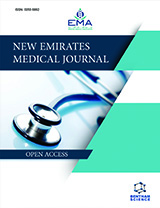Abstract
Background: Supraventricular tachycardia is the commonest type of narrow complex regular tachycardia seen in an emergency room, which can easily be diagnosed by surface ECG and acutely managed by Adenosine injection. A 59 years old male smoker was presented with palpitation with a pulse rate of 220/min with mild hemodynamic compromise. ECG confirmed narrow complex regular tachycardia, and the initial working diagnosis was established as Supraventricular Tachycardia (SVT) in the emergency room.
Case Presentation: As standard practice, adenosine was given, which failed in terminating the tachycardia but by creating a transient atrioventricular block, slowed down ventricular rate, and sawtooth-shaped P waves of atrial flutter were exposed. In contrast to the expectations, in this case of narrow complex regular tachycardia of supraventricular origin, adenosine could not establish the sinus rhythm but confirmed the diagnosis of atrial flutter with the regular rate with fixed A-V block.
Conclusion: Instead of therapeutic use, adenosine has been proven to be of diagnostic value, which can be used when the diagnosis of narrow complex tachycardia is in doubt, however with some cautions.
Keywords: Adenosine, Atrial flutter, Supraventricular tachycardia, Narrow complex tachycardia, Atrioventricular block, ECG.
New Emirates Medical Journal
Title:Diagnostic use of Adenosine for Atrial Flutter with Regular Tachycardia
Volume: 2
Author(s): Rajeev Lochan*, Deepaali Arora and Hussain Al Rahma
Affiliation:
- Department of Cardiology, Al-Zahra Hospital, Dubai,United Arab Emirates
Keywords: Adenosine, Atrial flutter, Supraventricular tachycardia, Narrow complex tachycardia, Atrioventricular block, ECG.
Abstract: Background: Supraventricular tachycardia is the commonest type of narrow complex regular tachycardia seen in an emergency room, which can easily be diagnosed by surface ECG and acutely managed by Adenosine injection. A 59 years old male smoker was presented with palpitation with a pulse rate of 220/min with mild hemodynamic compromise. ECG confirmed narrow complex regular tachycardia, and the initial working diagnosis was established as Supraventricular Tachycardia (SVT) in the emergency room.
Case Presentation: As standard practice, adenosine was given, which failed in terminating the tachycardia but by creating a transient atrioventricular block, slowed down ventricular rate, and sawtooth-shaped P waves of atrial flutter were exposed. In contrast to the expectations, in this case of narrow complex regular tachycardia of supraventricular origin, adenosine could not establish the sinus rhythm but confirmed the diagnosis of atrial flutter with the regular rate with fixed A-V block.
Conclusion: Instead of therapeutic use, adenosine has been proven to be of diagnostic value, which can be used when the diagnosis of narrow complex tachycardia is in doubt, however with some cautions.
Export Options
About this article
Cite this article as:
Lochan Rajeev *, Arora Deepaali and Al Rahma Hussain , Diagnostic use of Adenosine for Atrial Flutter with Regular Tachycardia, New Emirates Medical Journal 2021; 2 (2) . https://dx.doi.org/10.2174/0250688202666210520092352
| DOI https://dx.doi.org/10.2174/0250688202666210520092352 |
Print ISSN 0250-6882 |
| Publisher Name Bentham Science Publisher |
Online ISSN 0250-6882 |
 2
2
- Author Guidelines
- Graphical Abstracts
- Fabricating and Stating False Information
- Research Misconduct
- Post Publication Discussions and Corrections
- Publishing Ethics and Rectitude
- Increase Visibility of Your Article
- Archiving Policies
- Peer Review Workflow
- Order Your Article Before Print
- Promote Your Article
- Manuscript Transfer Facility
- Editorial Policies
- Allegations from Whistleblowers
Related Articles
-
Gender Differences in Hemodynamic Regulation and Cardiovascular Adaptations to Dynamic Exercise
Current Cardiology Reviews Phenomenology and Neurobiology of Childhood Onset Schizophrenia
Current Psychiatry Reviews Patient-Controlled Analgesia
Current Drug Targets Design, Development and Optimization of Ramipril Solid Lipid Nanoparticles Using Solvent Emulsification and Evaporation Method
Nanoscience & Nanotechnology-Asia The Inflammatory Response in Cardiac Surgery: An Overview of the Pathophysiology and Clinical Implications
Inflammation & Allergy - Drug Targets (Discontinued) Resuscitation of the Patient with the Functionally Univentricular Heart
Current Pediatric Reviews The Pharmacogenetics of CYP2C9 and CYP2C19: Ethnic Variation and Clinical Significance
Current Clinical Pharmacology Sevoflurane in Intraoperative and Postoperative Cardiac Surgery Patients. Our Experience in Intensive Care Unit with Sevoflurane Sedation
Current Pharmaceutical Design Drug Delivery Systems for Imaging and Therapy of Parkinson's Disease
Current Neuropharmacology Effects of PPARγ Ligands on Vascular Tone
Current Molecular Pharmacology Targeting the Renin-angiotensin System: Whats New?
Current Medicinal Chemistry - Cardiovascular & Hematological Agents Beta-Blockers and Nitrates: Pharmacotherapy and Indications
Cardiovascular & Hematological Agents in Medicinal Chemistry Editorial [Hot topic: Controversies in Hypertension Treatment (Guest Editors: Maciej Banach, Sverre E. Kjeldsen and Krzysztof Narkiewicz)]
Current Vascular Pharmacology Adrenomedullin: Exciting New Horizons
Recent Patents on Endocrine, Metabolic & Immune Drug Discovery (Discontinued) Recent Advances of Calcium Phosphate Nanoparticles for Controlled Drug Delivery
Mini-Reviews in Medicinal Chemistry Renoprotection by Direct Renin Inhibition: A Review Article and Meta-Analysis
Current Vascular Pharmacology The Role of Corticosteroids in Sepsis and Acute Respiratory Distress Syndrome
Current Respiratory Medicine Reviews Review of Treatment for Cocaine Dependence
Current Drug Abuse Reviews A Systematic Review of Randomized Controlled Trials Examining the Nephroprotective Properties of Antihypertensive Medications
Current Hypertension Reviews Community-Acquired Pneumonia and Outcome: The Importance of Genetics
Current Respiratory Medicine Reviews



























